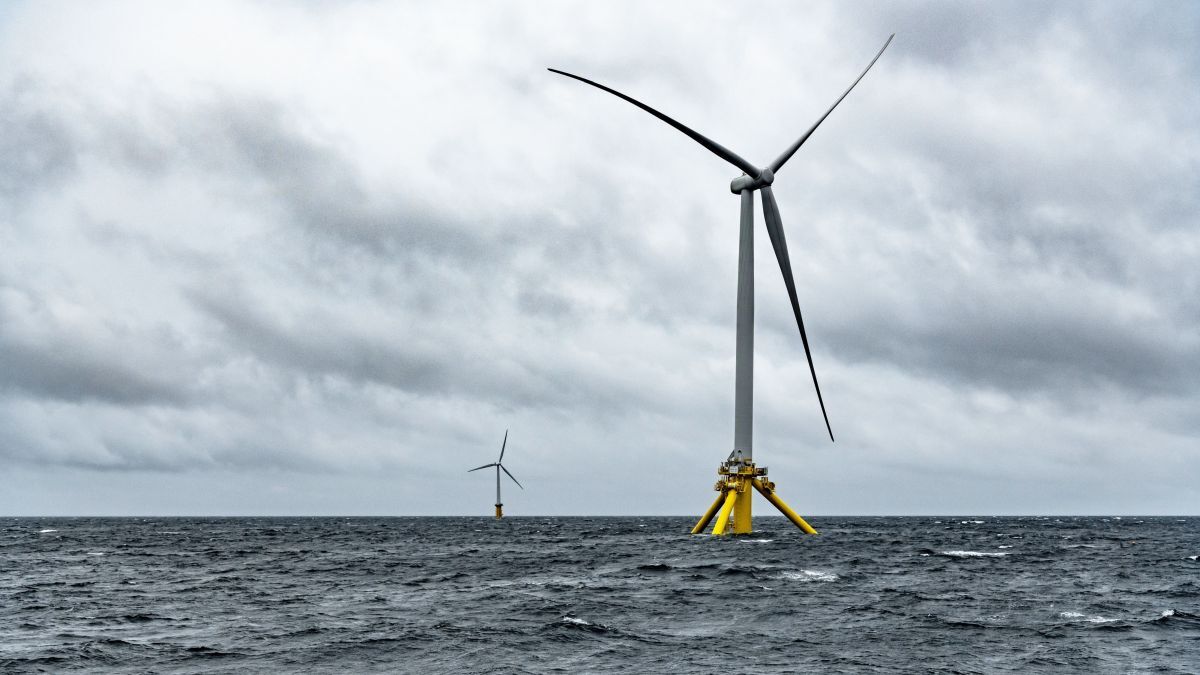A TetraSpar floating wind turbine, seen here in the foreground, was installed at the METCentre in 2021
Expansion will enable facility on Norway’s west coast to test more floating wind technology
The Norwegian Water Resources & Energy Directorate (NVE) has approved a significant expansion of the wind turbine testing facilities at the Marine Energy Test Centre (METCentre) at Karmøy, on the west coast of Norway.
The METCentre has been licensed for four new test slots for offshore wind turbines. It currently holds concessions for seven floating wind turbines and two bottom-fixed units.
METCentre head Arvid Nesse says the expansion strengthens Norway’s position as an international pioneer in the floating offshore wind market.
The world’s first floating offshore wind turbine was installed at the METCentre in 2009. Google’s Makani system was tested at the centre in 2019, and in 2021, it was joined by the Danish-developed TetraSpar turbine. Demonstration of the first 10+ MW ‘Flagship’ floating wind turbine will commence in 2023.
Now these latest licenses are in place, five more turbines will be installed by 2026 and agreements have already been signed with companies for the expanded test capacity.
“The expansion of the METCentre is good news for the Norwegian supply chain,” says Mr Nesse. “It is not just technology being tested here, but the entire process from planning, logistics, transport, environmental impact and installation.”
More than 30 Norwegian companies secured contracts when the TetraSpar turbine was installed. Many Norwegian suppliers are also involved in monitoring and operating wind turbines, including Spoor, which uses the test centre to develop technology for monitoring and studying how the wind turbines affect bird life.
“The new turbines to be installed here will result in new projects for both local and national suppliers,” says Mr Nesse. “Extensive testing at METCentre will give Norway a head-start in investing in this industry on a large scale. This experience is invaluable for us to further reduce the costs of floating offshore wind.”
The most recent example of this saw METCentre and Bluewater sign a contract for an option to deploy an innovative floating wind system at the site. The system is due to supply renewable energy to the Norwegian electricity grid once operational.
Bluewater has developed a version of the tension leg platform (TLP) foundation for floating wind turbines. The project, undertaken with METCentre, will showcase the solution in deep water in the North Sea. Bluewater is hopeful the project will demonstrate the advantages of the TLP and the fact that it can be successfully industrialised for large-scale projects.
The company’s TLP foundation is scalable, light and supports wind turbines with minimal floater-induced nacelle motions. The mooring system for the TLP has a small seabed footprint, reducing its environmental impact and optimising windfarm design and operation.
“We look forward to bringing Bluewater’s demonstration project to life,” says Mr Nesse. “Norwegian industry depends on projects such as this. Our option agreement with Bluewater shows the need for test centres that can support the development of floating wind technology and help to further reduce costs.”






